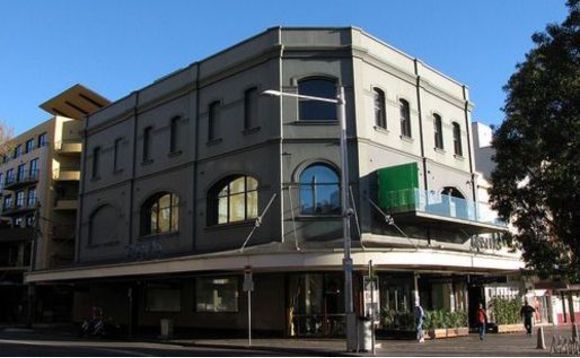
Debt and restructuring offer new definitions of an old favorite

Media-transmission satellites, anhydrous industrial alcohol, thenardite mineral rock, Australian pubs and Vietnamese casinos are all among the reasons why industry insiders insist that there is very little to be worried about for Asia Pacific distressed investors.
Despite Asia's overall buoyancy, one year after the economic rebound there are still pockets of inefficiencies and stressed asset owners bolstering the category. Yet, trying to categorize the opportunities under a single umbrella is a difficult task, as opportunities rarely come in the same shape or size. When it comes to investments in the distressed and restructuring space, how do those in the loop choose wisely?
Variations on the theme
Generalizations on market conditions in relation to distressed assets are difficult to come by, but market reaction to the GFC sheds some light on opportunities. Many global banking institutions are largely looking to minimize their exposure in the market, leaving their assets up for grabs at a discounted price. Some LPs have allocated more capital to Japanese real estate funds; approximately $15 billion in CMBSs (commercial mortgage backed securities) will mature in 2010 and 30-40% of those are thought to be in danger of default.
In Southeast Asia the boom in secondary mortgages in Malaysia, and rising defaults in Indonesia have bolstered the distressed and special situation segment. In Vietnam, the rise in mezzanine financing has put it on the radar as well.
Even Asia's growth engine, China, has a distressed story to tell. According to co-founder and MD of China-focused distressed investment fund Shoreline Capital, Benjamin Fanger, The PRC's own lending policies have led to case-by-case opportunities "that result from misallocation of capital... One major cause of such inefficiency is drastic swings in China's bank lending policies. A country growing at breakneck speed will sometimes lend too freely, eventually producing non-performing loans that need to be worked out. At other times, it will lend to little, producing high yield structured special situations opportunities with good companies."
Yet another subset of investment opportunities lie in situations in which the seller is more stressed than the asset. Australia has revealed many of these opportunities, which may not necessarily be classed as ‘distressed' but nevertheless do require restructuring and new capital.
Justin Ferrier, Managing Director of Myo Capital, explained, "We look for situations where a lender is exiting for non-economic reasons and where we can invest at much less than a loan's intrinsic value. We also believe there are large structural inefficiencies in Asian banking markets. Commercial banks don't always behave in an economic way, and sometimes they don't have the expertise or resources to invest in secondary loans or structure complex lending deals. We like to take advantage of that."
Opportunity knocks, for a select few
Asia is especially interesting because of the small number of firms pursuing this investment style. In July, Grant Kelley, head of Asia with Apollo Global Real Estate Management, told AVCJ that the number of Asia Pacific distressed private equity firms is about one quarter the number in the US, as a ratio of regional GDP. Even at the height of the Korean distress cycle in the early 2000s, here were perhaps three or four participants, and that has dwindled to an average of two in 2010.
That can have an adverse affect when fundraising, notes one GP. "There are so few funds touting the merits of distressed investing that LPs often gloss over the segment." But for those that do have money to deploy, the opportunities are abundant.
Apollo Global Real Estate Management expanded its operations to Asia Pacific this year, with an initial focus on real estate opportunities in Australia, Japan and South Korea. Lazard Carnegie Wylie Private Equity was more specific, this year launching a $91 million fund to buy Australian distressed pubs and hotels.
"In the past three to six months, we have found the most attractive opportunities in the SME businesses of Korea, India, and Australia, rather than the larger capitalized opportunities, which is what we had focused on for the 18 months post the global financial crisis," says Rob Petty, Managing Partner and Co-Founder of Clearwater Capital Partners.
Ted Dow, Managing Director of DIF Capital Partners, suggests that small- and mid-cap companies with big ambitions are generally safe bets because they "do not have a deep-pocketed sponsor that can raise funds from the equity capital markets, yet they are still facing either large capex requirements or pending debt refinancing."
To close with a telling statistic – and to rebuff the argument that distressed simply does not apply to Asia - regionally, there is an estimated $16.5 trillion in outstanding loans; even if 1% default, that is $1.65 trillion in opportunity.
Latest News
Asian GPs slow implementation of ESG policies - survey
Asia-based private equity firms are assigning more dedicated resources to environment, social, and governance (ESG) programmes, but policy changes have slowed in the past 12 months, in part due to concerns raised internally and by LPs, according to a...
Singapore fintech start-up LXA gets $10m seed round
New Enterprise Associates (NEA) has led a USD 10m seed round for Singapore’s LXA, a financial technology start-up launched by a former Asia senior executive at The Blackstone Group.
India's InCred announces $60m round, claims unicorn status
Indian non-bank lender InCred Financial Services said it has received INR 5bn (USD 60m) at a valuation of at least USD 1bn from unnamed investors including “a global private equity fund.”
Insight leads $50m round for Australia's Roller
Insight Partners has led a USD 50m round for Australia’s Roller, a venue management software provider specializing in family fun parks.






